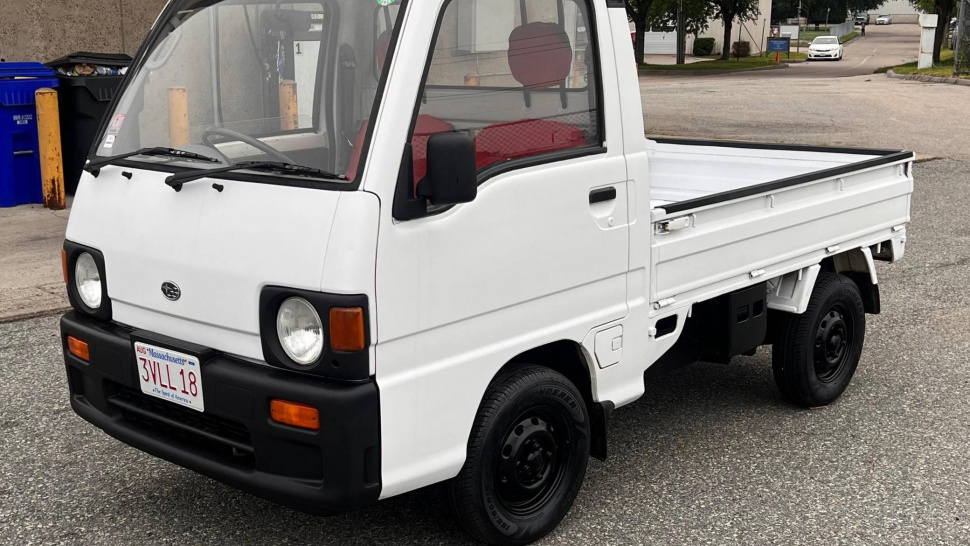While many enthusiasts love keeping their Sambar in its stock form, a growing number are exploring engine swaps to breathe new life into these small but mighty vehicles. Modernizing the Subaru Sambar powertrain can transform it from a humble workhorse into a surprisingly capable machine, whether the goal is more speed, better fuel economy, or improved reliability.
When considering an engine swap for a Subaru Sambar, the first thing to acknowledge is the platform’s unique history. Earlier generations were rear-engine, rear-wheel-drive configurations, while later models moved to mid-engine layouts. The powerplants ranged from air-cooled engines to water-cooled units, with displacement limited to the kei car standard of 660cc. These engines were designed for Japan’s tight roads and low-speed regulations, but in other markets, their limited performance can be a drawback. This is why Subaru Sambar engine swaps have become a niche but passionate trend—modern engines can provide not only more horsepower but also improved emissions compliance and drivability.
A common choice for upgrading the Subaru Sambar engine is to stick within the kei class by selecting a newer 660cc turbocharged motor from a more modern kei vehicle. This approach retains the character of the Sambar while offering a notable bump in performance. Engines from vehicles like the Subaru Vivio or certain Suzuki Carry and Daihatsu Hijet models have been transplanted successfully. These swaps often require custom mounts, modified wiring looms, and sometimes transmission adaptations, but they generally fit the Sambar’s compact engine bay without drastic body alterations.
For those who want more substantial performance gains, there’s a more radical path: fitting a larger displacement engine from outside the kei category. Some Subaru Sambar owners have experimented with 1.0L to 1.3L engines from small hatchbacks, or even electric powertrains. This is where the customization becomes more involved, often requiring significant chassis reinforcement, upgraded brakes, and improved suspension to handle the extra power. It’s a bigger investment in both time and money, but the results can be remarkable—turning a once 40-horsepower truck into something with double or triple the output.
Electric conversions for the Subaru Sambar are slowly gaining traction, especially among those who appreciate its small size and urban-friendly footprint. An EV swap eliminates many of the maintenance concerns associated with aging gasoline engines while giving the Sambar a smooth, silent ride. Some DIY builders have repurposed battery and motor setups from Nissan Leaf or Mitsubishi i-MiEV donors, while others have gone for aftermarket EV kits. The challenge lies in battery placement, as the Sambar’s small frame offers limited space. Clever builders have used the underbed or underfloor areas to mount batteries, preserving cargo or cabin space.
Of course, engine swaps are never just about the engine itself. Modernizing the Subaru Sambar powertrain often means upgrading supporting systems. Cooling is a major concern, especially if moving from a naturally aspirated setup to a turbocharged or larger engine. A larger radiator, improved coolant lines, and even auxiliary fans might be necessary to prevent overheating. Likewise, electrical systems may need a complete overhaul to accommodate new sensors, fuel injection systems, or high-voltage EV components.
Transmission compatibility is another crucial factor. The Subaru Sambar uses compact gearboxes designed for low-output kei engines. When swapping in a more powerful motor, the stock transmission may not be able to handle the increased torque. Some owners opt for matching the donor engine’s transmission, while others modify the original gearbox with upgraded internals. In the case of electric conversions, a single-speed gearbox or direct-drive system can be used, simplifying the drivetrain.
Legal and regulatory aspects can’t be ignored. In countries like the United States, where imported Subaru Sambar models are typically over 25 years old, engine swaps are generally permissible for off-road or show use but may require emissions testing for road registration. In Japan, engine swaps within the kei class are often easier to register, but going beyond kei specs can complicate inspections. Builders should always research local regulations before committing to a powertrain upgrade.
Performance gains from a successful Subaru Sambar engine swap can be transformative. A 660cc turbo swap can shave several seconds off acceleration times, making highway merges less nerve-wracking. Larger engines can enable the Sambar to comfortably cruise at higher speeds, tackle steeper grades, and carry heavier loads without strain. Electric swaps offer instant torque, ideal for stop-and-go driving, and a whisper-quiet ride that contrasts sharply with the Sambar’s usual engine note.
However, there are also trade-offs. Heavier engines can affect handling balance, especially in rear-engine Sambars where additional weight over the back axle can make the vehicle more prone to oversteer. Fuel economy may drop if moving to a larger gas engine, although modern EFI systems can help offset the difference. Maintenance complexity can increase, particularly when using a rare engine with limited parts availability. And while an electric Subaru Sambar can be wonderfully low-maintenance, battery replacement costs remain a consideration.
For many enthusiasts, the appeal of an engine swap isn’t just the numbers—it’s the character transformation. A modernized Subaru Sambar can keep up with traffic, handle long-distance road trips, or serve as a unique promotional vehicle for a small business. The swap also breathes new life into older models that might otherwise be sidelined due to tired original engines.
The culture around Subaru Sambar modifications is collaborative and resourceful. Online forums, YouTube channels, and kei truck clubs share detailed swap guides, wiring diagrams, and fabrication tips. Many successful builds combine ingenuity with practical parts sourcing—such as adapting radiators from motorcycles, using intercoolers from other kei cars, or crafting custom exhaust systems. These projects often showcase the creativity of the kei truck community, where space constraints and budget limitations lead to inventive engineering solutions.
Engine swaps also give Subaru Sambar owners the opportunity to integrate other modern technologies. Alongside a powertrain upgrade, many take the opportunity to add power steering, disc brake conversions, LED lighting, or upgraded interiors. The result is a kei truck or van that blends retro charm with contemporary performance and comfort.
There’s also a growing subset of builders pursuing “resto-mod” style Subaru Sambar projects. In these cases, the vehicle is restored cosmetically to near-original condition but receives a hidden modern engine and drivetrain. This keeps the vintage aesthetic intact while allowing the owner to enjoy modern drivability. A classic-looking Sambar with a whisper-quiet electric motor or a responsive turbocharged engine turns heads both for its looks and its unexpected performance.
Cost is one of the biggest deciding factors in choosing a Subaru Sambar engine swap path. Kei-to-kei swaps with newer 660cc engines can sometimes be completed for a few thousand dollars, especially if the builder does most of the work themselves. Larger displacement or electric conversions can easily run into five-figure territory, particularly if professional fabrication and wiring are required. Ultimately, the decision often comes down to the owner’s goals: daily driver practicality, unique showpiece, or performance experiment.
The Subaru Sambar’s small size, light weight, and cult following make it an ideal candidate for creative engine swaps. From spirited turbocharged kei builds to silent electric conversions, the possibilities are as varied as the owners themselves. While the process requires careful planning, technical skill, and sometimes a willingness to navigate regulatory hurdles, the payoff is a vehicle that blends Japanese mini-truck charm with a powertrain suited to modern roads.
For enthusiasts who love the Sambar but wish it had a bit more muscle, the engine swap showdown represents a perfect opportunity to reimagine what this little truck or van can do. Whether the choice is to stick with kei-spec upgrades or leap into high-power territory, modernizing the Subaru Sambar powertrain ensures that these beloved vehicles remain not only relevant but also exciting for years to come.
Keywords used: Subaru Sambar, Subaru Sambar engine, Subaru Sambar engine swaps, Subaru Sambar powertrain, Subaru Sambar modifications, Subaru Sambar electric, Subaru Sambar upgrades, Subaru Sambar turbo, Subaru Sambar restoration, Subaru Sambar performance.



Share the News